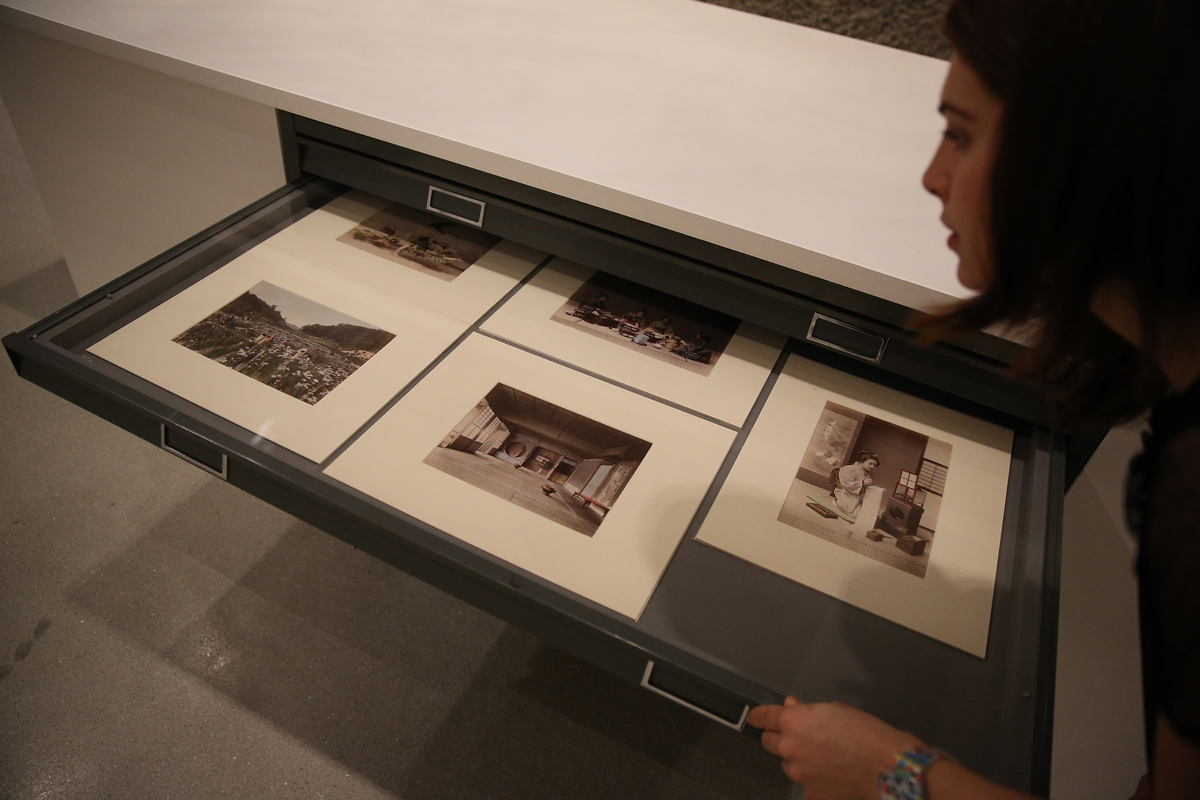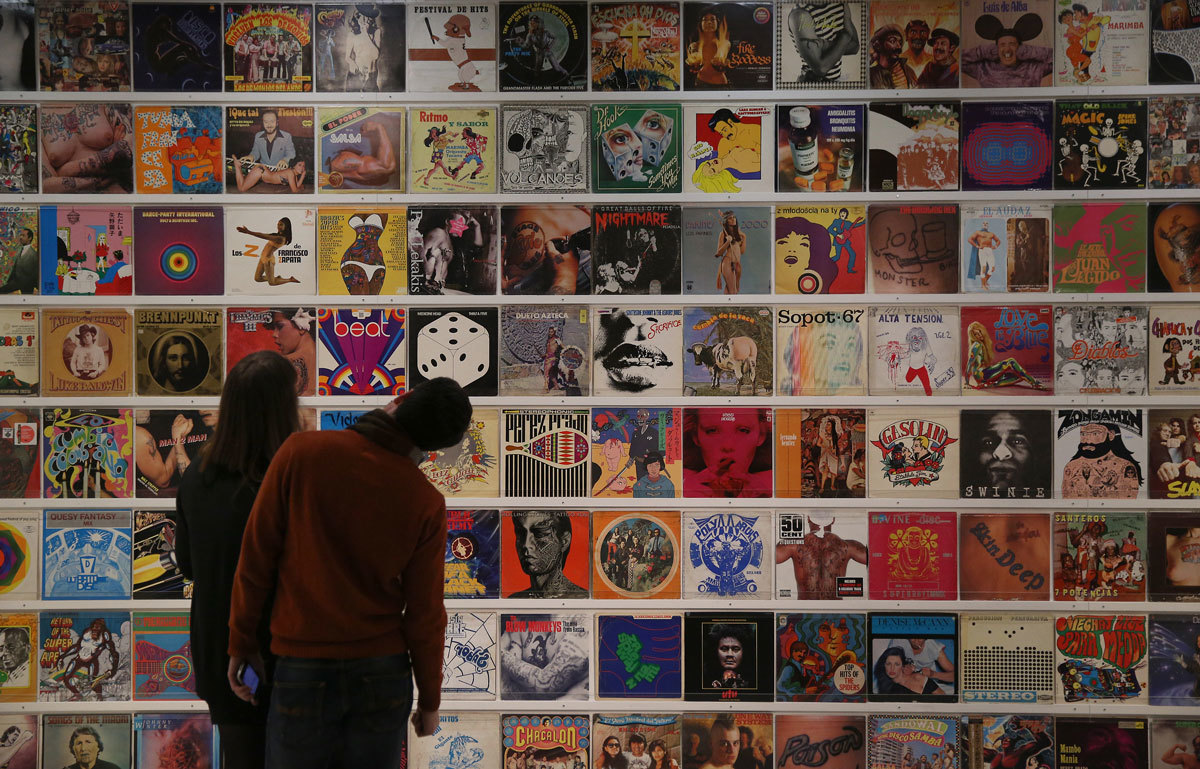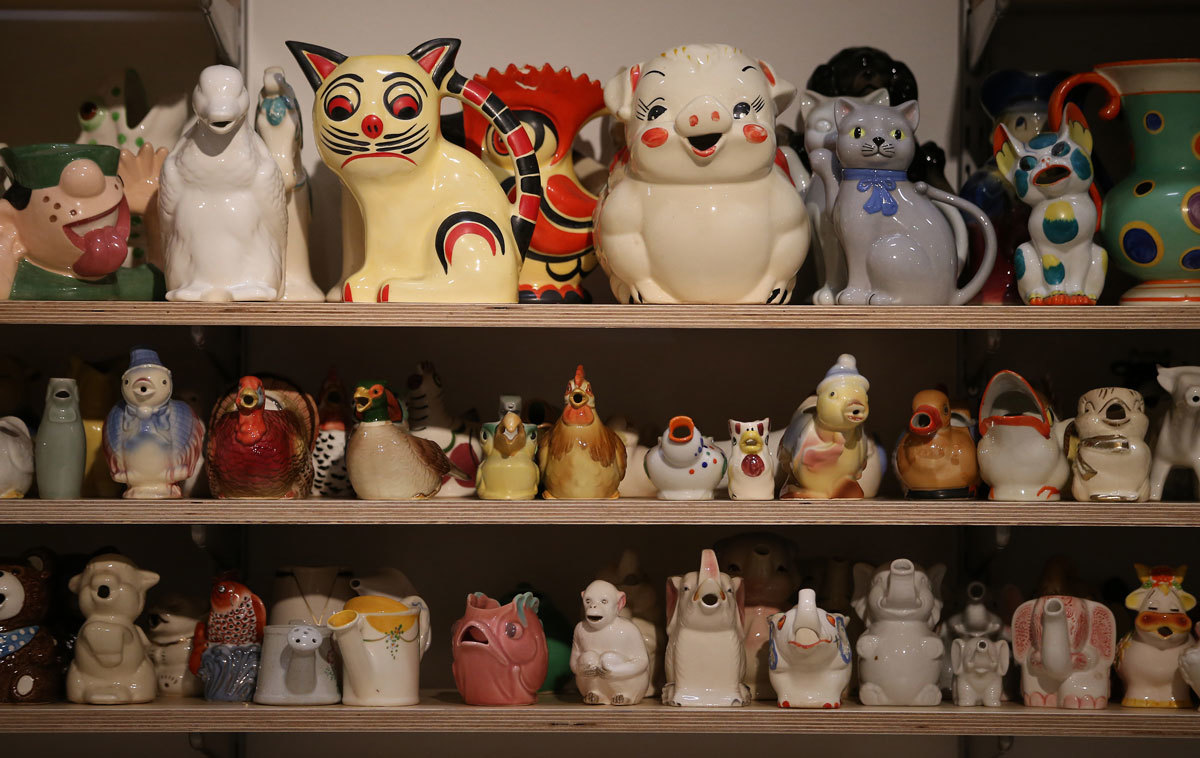The art of creation fascinates us. We’re obsessed with the details of artists’ lives on Instagram and the styling of their studios and living spaces in interiors-porn magazine, Apartamento. Giving even more intimate access, the Barbican’s latest show Magnificent Obsessions is the first to explore the alchemical relationship between collecting and creating. It takes us on an journey through the objects and obsessions that shape artists’ psyches and processes, with 14 artists’ private collections of found objects and ephemera on show besides the works they inspired.
The selection of artists is as eclectic as the objects on display, with genre-makers featured alongside lesser-knowns. It explores artists’ hunger for visual cues and new concepts and how the mania for collecting (acquiring, arranging, displaying and hording) can seep into their work. Check out English pop-artist Peter Blake’s curios from Victorian circuses that feature in the Sgt. Pepper’s Lonely Hearts Club Band cover art, and American painter Jim Shaw’s cache of bizarro thrift store paintings.
We profile five artists whose collections sparked creations.
Andy Warhol
Warhol was a compulsive collector of almost everything: folk art, pop ephemera, art deco furnishings, Native American artefacts and fine art. But he’s best-known for his fascination with mass-produced collectibles, bought from thrift stores and flea markets, that feature in his work. A year after his death in 1987, Sotheby’s auctioned 10,000 lots of his possessions, including a collection of 178 cookie jars, a selection of which are on display in the show beside the screen-prints they inspired. Warhol was excited by the acquisition and possession of things rather than use or appreciation. Once bought, he often left items around his studio, not even bothering to take some out of their wrappings or bags.

Martin Parr
No one captures European banal like British photographer Martin Parr, the master of documenting super-saturated warts-and-all holidays and en-masse English rituals. Unsurprisingly, Parr is a compulsive collector of kitsch and souvenirs of the everyday. His collection of byegone English photographs assembled by theme give a fly-on-the-wall view of small-town curiosities: giant hail stones, wrecked motor cars, new built ’50 council flats, Morris Minors and disaster memorabilia. His display of seaside-resort postcards is typically deadpan and unsexy.

Sol de Witt
Understated perfectionism is on show with American conceptual and minimalist artist Sol De Witt, who is the only artist in the exhibition to have collected other artists’ works. A wall of Henri Cartier Bresson photographs are displayed beside those of Hanne Darboven (featured in the exhibition). De Witt also collected scores and manuscripts from minimalist musicians Steve Reich and Philip Glass, who he courted as friends, feeling an affinity between their works. On display, his piece Autobiography documents, in microscopic detail, De Witt’s Manhattan loft with 1000 photographs of grouped objects (potted plants, plug points, magazines, floor tiles) presented in grid-formation.

Dr Lakra
Dr Lakra was born in Oaxaca, Mexico, and started-out as a tattoo artist before branching into drawing and murals. His obsession with the bizarre and macabre is reflected in his collection of records, comics and found scrapbooks. A wall of his LPs features in the show, some chosen for the music, others for their imagery, particularly their range of tattoos on cover artist such as 50 Cent, Billy Idol, and The Tramps. His artworks on display demonstrate a direct connection between collection and creation: Lakra used found-objects such as old magazine covers of Latin pin-ups and boxers as canvases for his work, on which he told new stories with over-laid illustrations and intricate tattoo doodles.

Damian Hirst
Brit-art bad boy Damian Hirst’s obsession with death and temporality runs through his work. An obvious choice for the show, his collection of taxidermy, medical equipment and anatomical models give an unmatched insight into the blurred lines between inspiration, appropriation and theft. Hirst, like Jeff Koons, is famed for a hands-off approach to creating his work, leaving the hard-graft to assistants. Yet his seven-legged lamb and stuffed Somali lion give a sense of his conceptual processes. And the work on display from Hirst’s ‘Entomology Series’ reflect the psyche of a collector rather than a maker.

Magnificent Obsessions: The Artist as Collector is on show at the Barbican Art Gallery, 12 February – 25 May 2015
